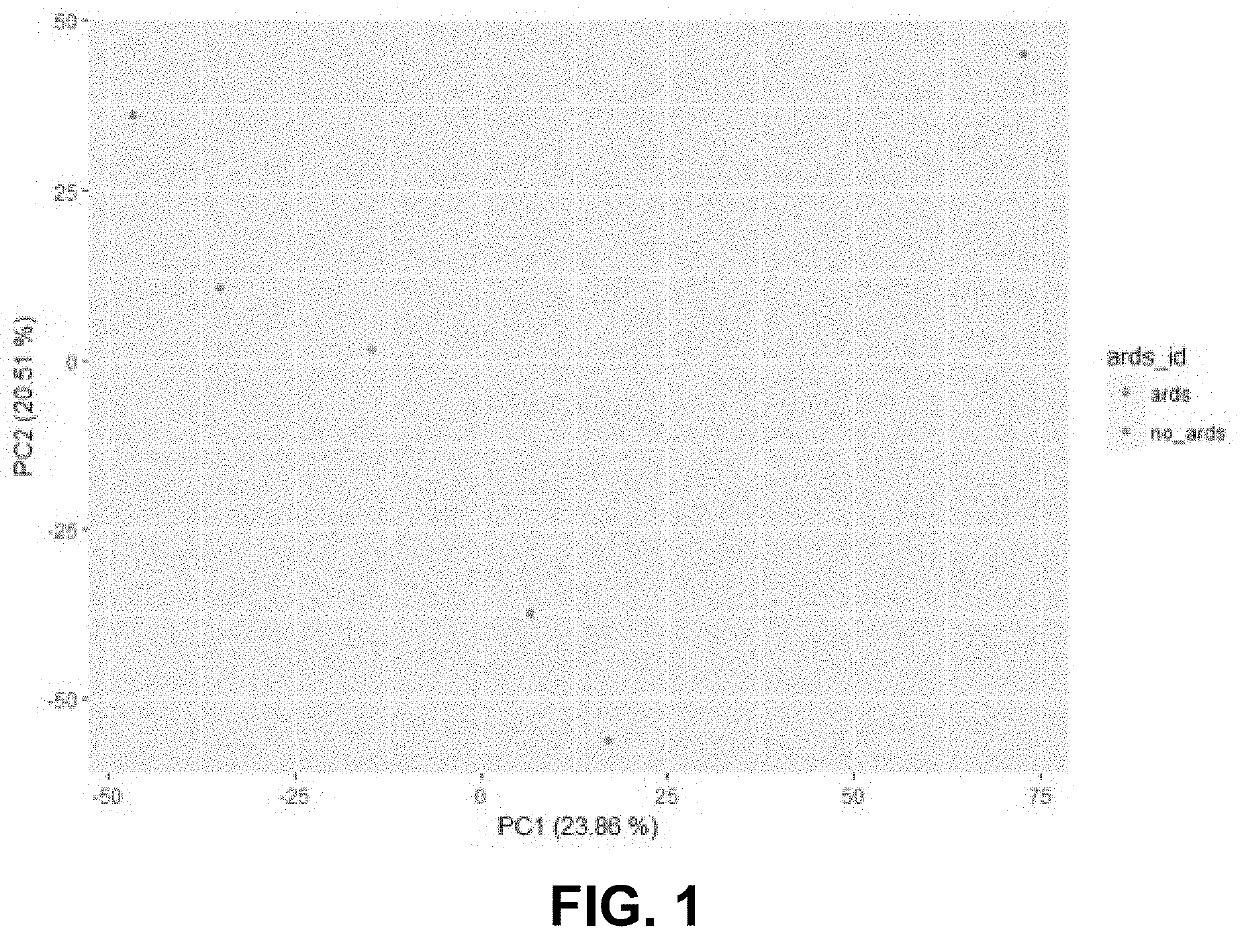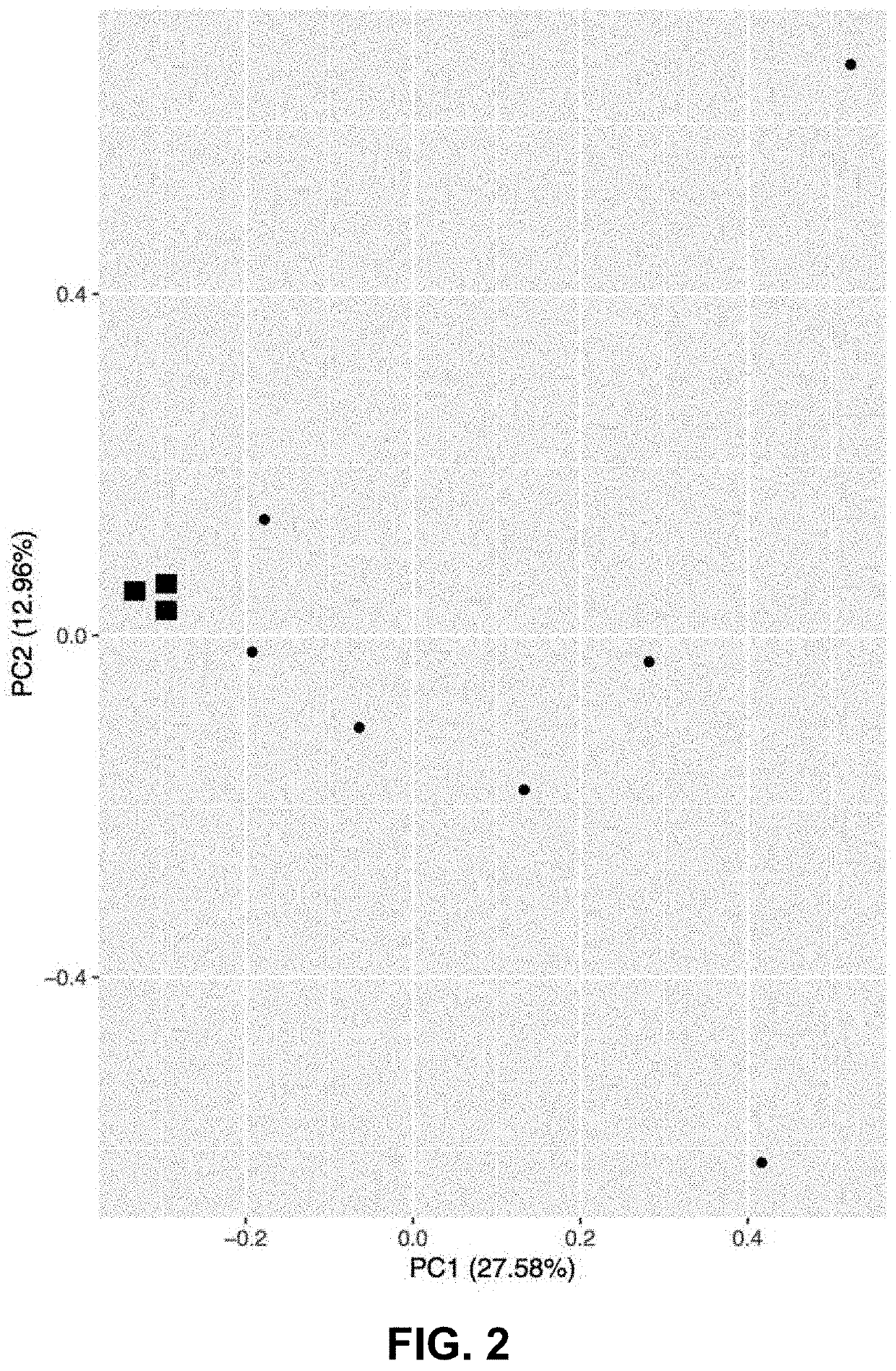RNA sequencing to diagnose sepsis and other diseases and conditions
a sepsis and sequencing technology, applied in the field of chemical analysis of biological materials, can solve the problems of health loss, significant health loss worldwide, and large number of sepsis cases, and achieve the effect of reducing the number of cases
- Summary
- Abstract
- Description
- Claims
- Application Information
AI Technical Summary
Benefits of technology
Problems solved by technology
Method used
Image
Examples
example 1
Unmapped Bacterial Reads to Identify Bacteria Causing Sepsis
[0086]Because bacterial infections are a common cause of morbidity in trauma patients, unmapped reads that align with bacteria are useful for the diagnosis and treatment of trauma patients. Unmapped reads from RNA sequencing data provide a valuable tool for the trauma patient. The decrease in the number of bacterial reads in the blood may be due to increased immune response. Some bacteria keep constant levels between groups, which signifies a virulent pathogen.
[0087]The technique of RNA sequencing has resulted in creating massive amounts of data. The first step with public RNA sequencing data is usually to align the reads to the reference genome of interest. RNA sequences that do not align with the reference genome (10-30%) are usually discarded when they cannot be mapped.
[0088]The inventors used a mouse model of hemorrhagic shock followed by cecal ligation and puncture. The inventors isolate RNA from blood and lung samples...
example 2
Unmapped Viral Reads to Identify Sepsis or Viral Reactivation
[0090]Unmapped data have been aligned to regions in the genomes of viruses. In critical illness, not only does the percentage of unmapped reads suggest a biomarker, but also the alignment of unmapped reads to some viral genomes. The percentage of unmapped reads in these organs during periods of critical illness can be a biomarker of severity and outcomes.
[0091]To assess the impact of critical illness on unmapped reads and their composition, the inventors expose mice (e.g., C57BL6 mice) to sequential treatment of hemorrhagic shock followed by sepsis. This treatment produces indirect acute respiratory distress syndrome (ARDS). RNA is extracted from lung and blood samples and sequenced via next-generation RNA-sequencing. Reads are aligned to the mm9 reference genome. The sources of unmapped reads were aligned by Read Origin Protocol (ROP). Changes in the viral signature of the unmapped reads are different when comparing blood...
example 3
Unmapped B / T V(D)J Use to Identify Sepsis
[0094]In immune systems, V(D)J recombination allows for a diversity of antibodies in B cells and T cell receptors in T cells. During critical illness, the variety of these recombination events reduces, but recovers. RNA sequencing better characterizes V(D)J recombination events. RNA sequencing shows more diversity in critical illness compared to what was described previously. B and T cell composition could prove to be an important marker in critical illness and predicting outcomes of sepsis.
[0095]The inventors subject mice (e.g., C57BL6 mice) to sequential of hemorrhagic shock followed by sepsis. This induces acute respiratory distress syndrome (ARDS). Lung and blood samples are collected. RNA from the samples is sequenced by next-generation sequencing. Reads from critically ill and healthy mice are aligned to GRCm38 annotation and then mapped to the V(D)J annotation by Read Origin Protocol (ROP).
[0096]In a third assay, the inventors recovere...
PUM
| Property | Measurement | Unit |
|---|---|---|
| splicing entropy | aaaaa | aaaaa |
Abstract
Description
Claims
Application Information
 Login to View More
Login to View More - R&D
- Intellectual Property
- Life Sciences
- Materials
- Tech Scout
- Unparalleled Data Quality
- Higher Quality Content
- 60% Fewer Hallucinations
Browse by: Latest US Patents, China's latest patents, Technical Efficacy Thesaurus, Application Domain, Technology Topic, Popular Technical Reports.
© 2025 PatSnap. All rights reserved.Legal|Privacy policy|Modern Slavery Act Transparency Statement|Sitemap|About US| Contact US: help@patsnap.com



